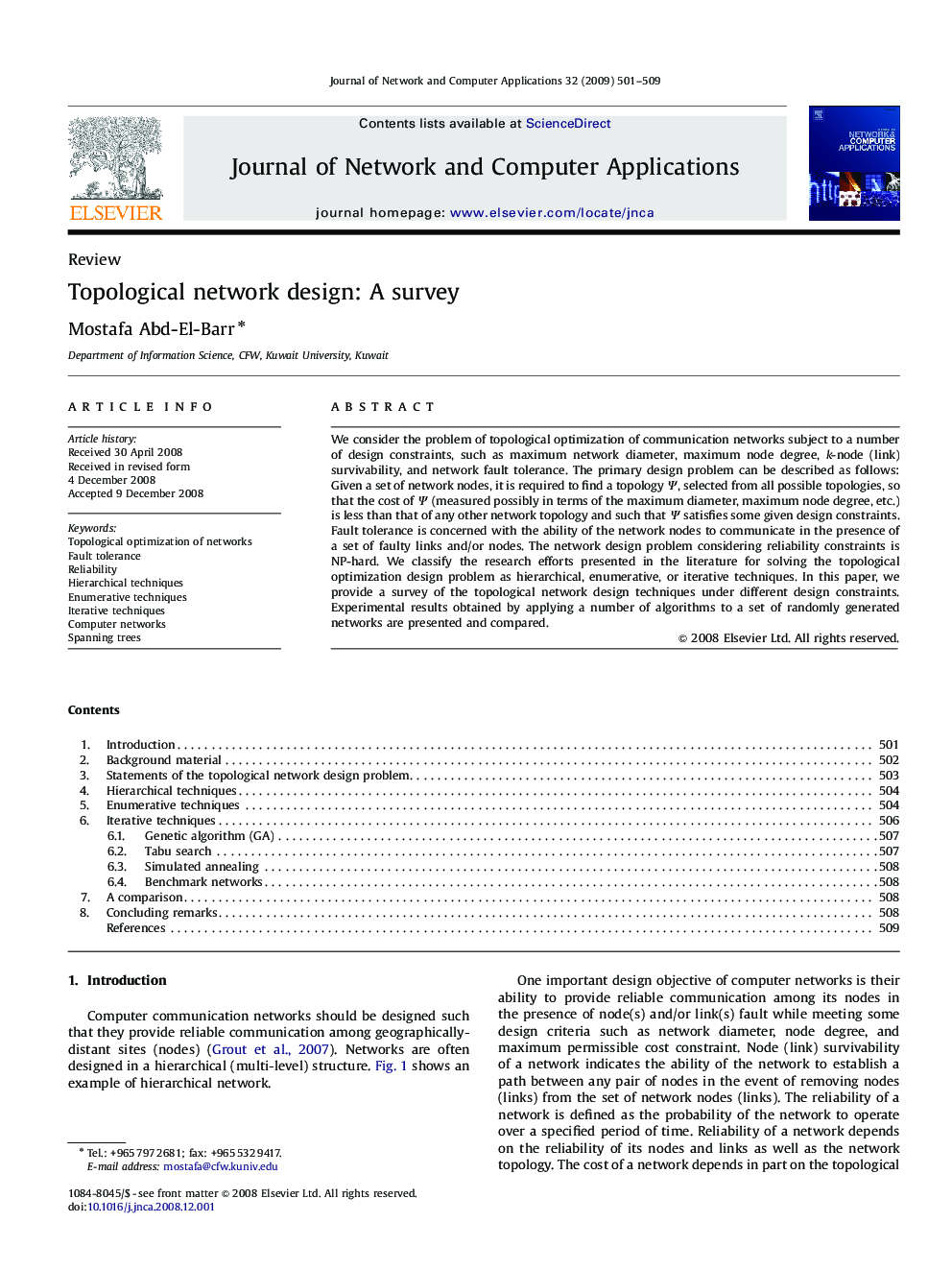| Article ID | Journal | Published Year | Pages | File Type |
|---|---|---|---|---|
| 457539 | Journal of Network and Computer Applications | 2009 | 9 Pages |
We consider the problem of topological optimization of communication networks subject to a number of design constraints, such as maximum network diameter, maximum node degree, k-node (link) survivability, and network fault tolerance. The primary design problem can be described as follows: Given a set of network nodes, it is required to find a topology Ψ, selected from all possible topologies, so that the cost of Ψ (measured possibly in terms of the maximum diameter, maximum node degree, etc.) is less than that of any other network topology and such that Ψ satisfies some given design constraints. Fault tolerance is concerned with the ability of the network nodes to communicate in the presence of a set of faulty links and/or nodes. The network design problem considering reliability constraints is NP-hard. We classify the research efforts presented in the literature for solving the topological optimization design problem as hierarchical, enumerative, or iterative techniques. In this paper, we provide a survey of the topological network design techniques under different design constraints. Experimental results obtained by applying a number of algorithms to a set of randomly generated networks are presented and compared.
